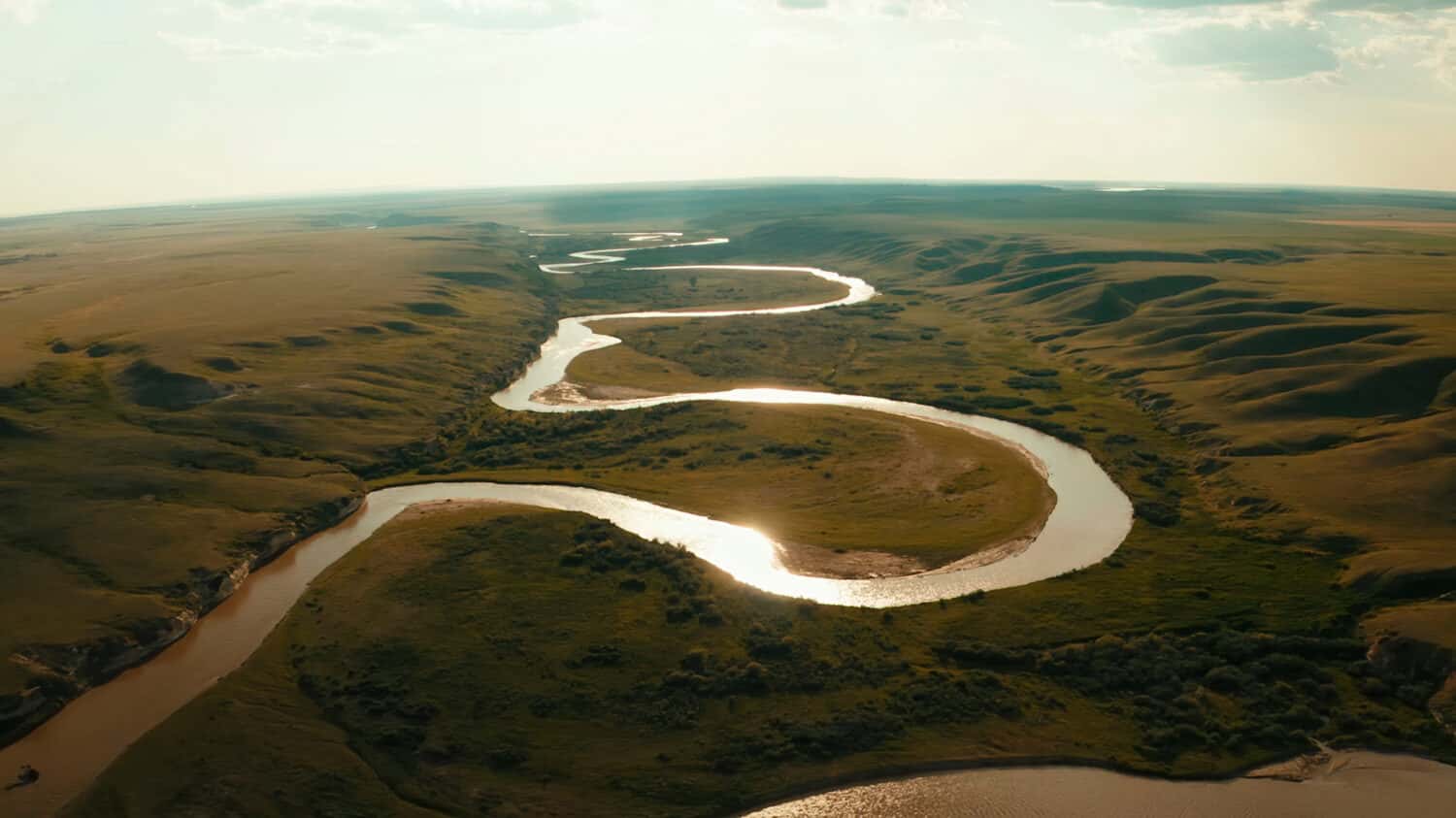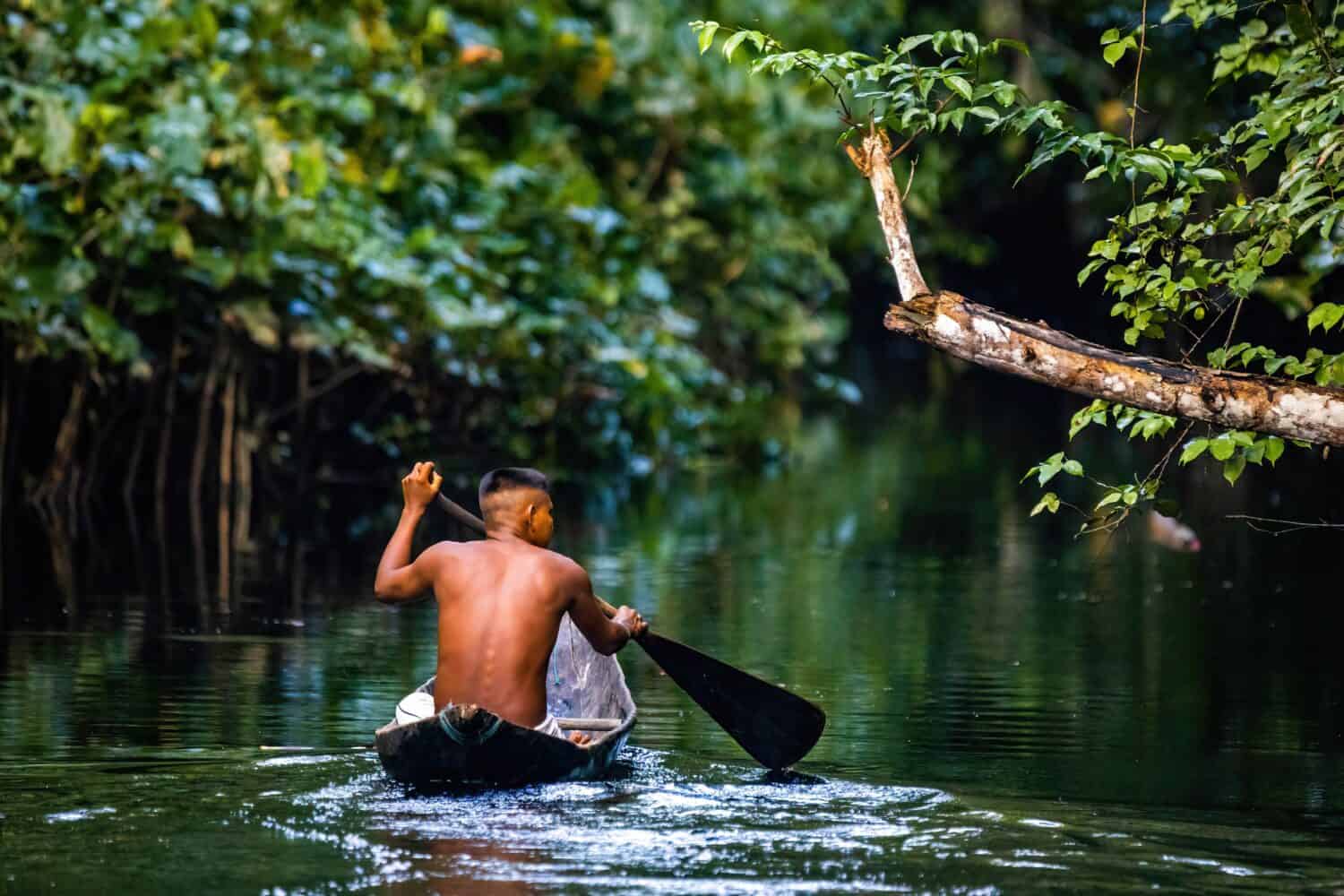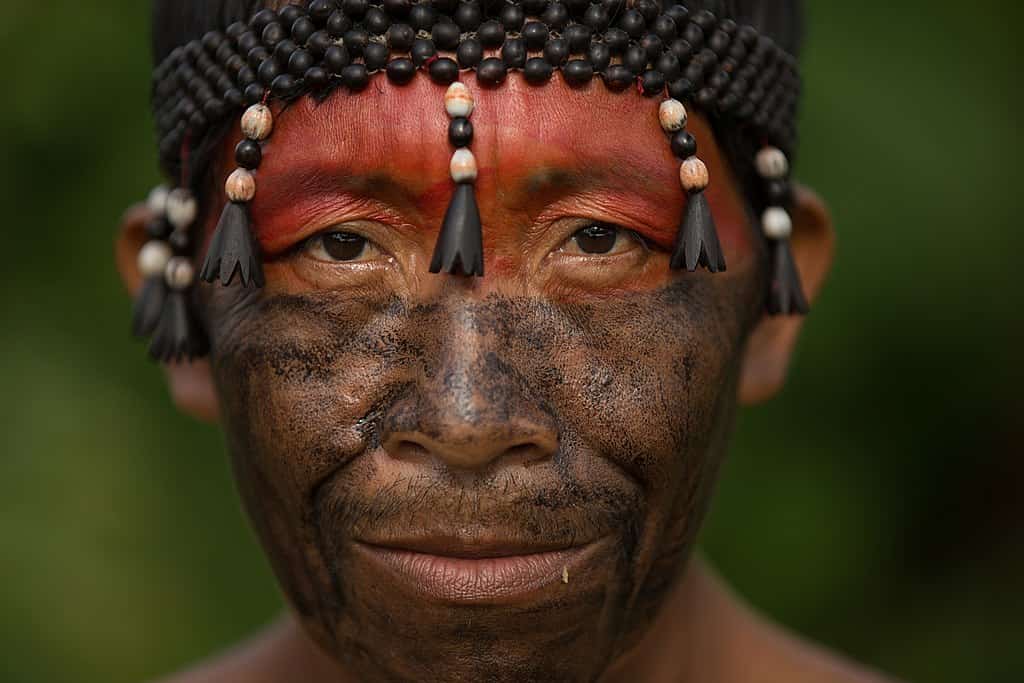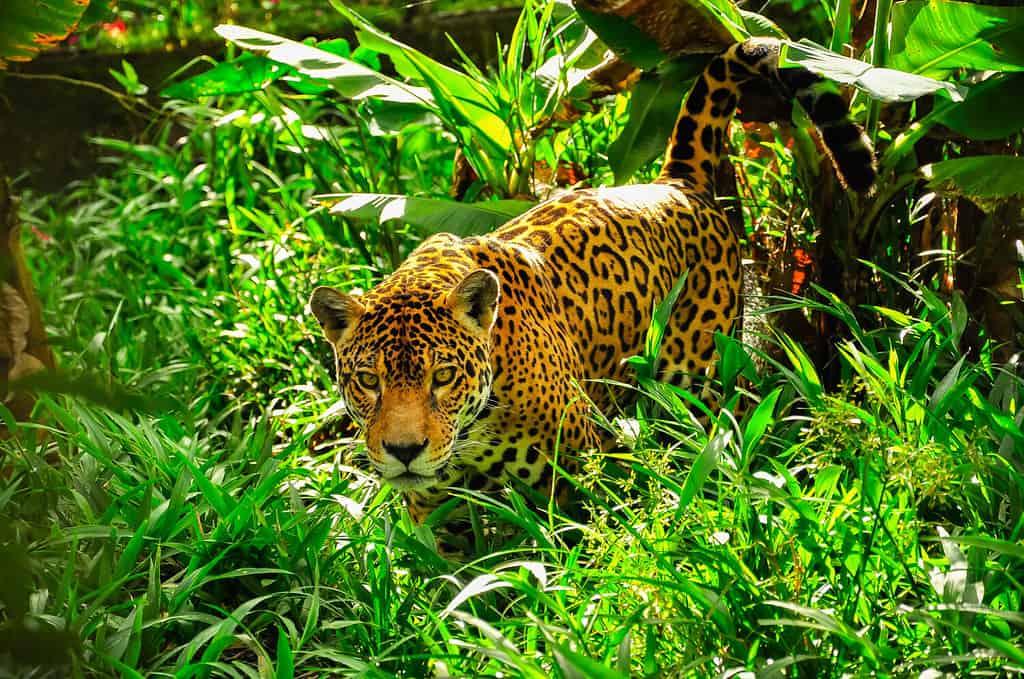South America is the fourth largest continent and is home to the world’s longest river, the Amazon River. Tributaries and dense, forested land are connected to this extraordinary river in Brazil. But that’s not all. Discover the most remote spot in the Amazon Rainforest, what’s there, and if it’s safe to explore.
Where Is the Most Remote Spot in the Amazon Rainforest?

The Rio Javari gives the Vale do Javari its name.
©sashamol/Shutterstock.com
The most remote spot in the Amazon Rainforest is the Vale do Javari, also called the Valley of Javari. Vale do Javari is Brazil’s second-largest Indigenous territory along the western Amazon border of Peru. However, it contains the country’s highest concentration of isolated Indigenous groups. It’s named for the Rio Javari, or Javari River, an important tributary to the Amazon River. This land in the southwestern region of the State of Amazonas encompasses 32,990 square miles, slightly larger than Austria. Coordinates are -5.358889, -70.986111.
Over a dozen Indigenous groups with an estimated total of over 6,000 individuals in varying degrees of isolation live scattered in the Vale do Javari. However, many ethnic groups live in total isolation. As a result, we know little to nothing about them.
Is It Safe to Explore the Vale do Javari?

Exploring the Vale do Javari is possible, but dangerous and illegal.
©Photo Spirit/Shutterstock.com
Much of the Amazon Rainforest is unexplored wilderness. Although it is technically possible to explore, it’s illegal. The Brazilian government monitors the area and some of its inhabitants from the air to prevent non-indigenous people from entering the protected territory.
Those granted access to the Vale do Javari face many dangers on their trek to the most remote spot in the Amazon Rainforest. In addition to the wild animals that roam the untamed jungle, drug smugglers, loggers, miners, and poachers threaten the lives of the Indigenous communities and those who come to the region to help them. Despite the laws and pleas from the communities, unauthorized people have infiltrated the protected lands for decades.
Some groups have limited contact with outsiders, such as the Kanamari, Marubo, Matis, and Matses (Mayoruna). The leaders work with the government, Indigenous experts, and international journalists to keep their land safe. They educate the public on their struggles with trespassers, climate change, and deforestation. The Vale do Javari Indigenous groups live in isolation by choice and are vulnerable to violence and disease from outsiders.
Protecting Indigenous Communities in the Amazon Rainforest

The FUNAI protects Indigenous groups and their rights in Brazil.
©Amazônia Real from Manaus AM, Brasil / CC BY 2.0 – License
The Vale do Javari was designated as Terra Indigena at the national level in 2002. This means Indigenous people exclusively inhabit and possess the territory. Brazil attempted to move these groups to other areas to cultivate the land for decades. However, they fought for their right to their land. The Brazilian governmental agency Fundação Nacional dos Povos Indígenas, or National Indigenous People Foundation (FUNAI), was created to protect indigenous groups and their rights.
Scott Wallace is a famous journalist and writer who traveled into the most remote spot in the Amazon Rainforest in search of the Flecheiros, or the People of the Arrow. Wallace caught only a glimpse of the uncontacted Indigenous group during an expedition with a FUNAI group in 2002. In fact, the group is so isolated that we do not know their ethnicity, language, or what they call themselves. Officials went on months-long expeditions to learn about the group, visiting abandoned campsites and watching potential threats to their land without making direct contact. Wallace is one of many outsiders who have come to the Vale do Javari to learn about and help protect the uncontacted communities.
Through their expedition, they saw that keeping the land protected allowed the Indigenous communities to live in peace and the land to thrive. However, government struggles in the last decade have increased threats to the land and its people.
Wildlife in the Vale do Javari

Jaguars live throughout Brazil, including the most remote spot in the Amazon Rainforest.
©Jo Reason/Shutterstock.com
The most remote spot in the Amazon Rainforest is one of the most biodiverse landscapes in the country. The forest of the Vale do Javari seems endless, providing a home for thousands of animals. When people think of the Amazon Rainforest the first animal that comes to mind is often the jaguar. They live in various ecosystems throughout the Amazon Rainforest, including the Vale do Javari. They are the unofficial animal of Brazil, giving them the nickname “Brazilian panthers”. Tapirs, pumas, deer, bats, monkeys, and rodents are also some of the most common mammals in the region.
Parrots, toucans, and various marsh birds are a few types of native birds in the most remote spot in the Amazon Rainforest. Reptiles include anacondas, boas, caiman, iguanas, and turtles. Moreover, there are hundreds of insect species. Along the river are some of the largest and most threatened rainforest ecosystems. Within them live animals, including ocelots, the pirarucu, and hundreds of other fish.
The photo featured at the top of this post is © Richard Whitcombe/Shutterstock.com
Thank you for reading! Have some feedback for us? Contact the AZ Animals editorial team.






